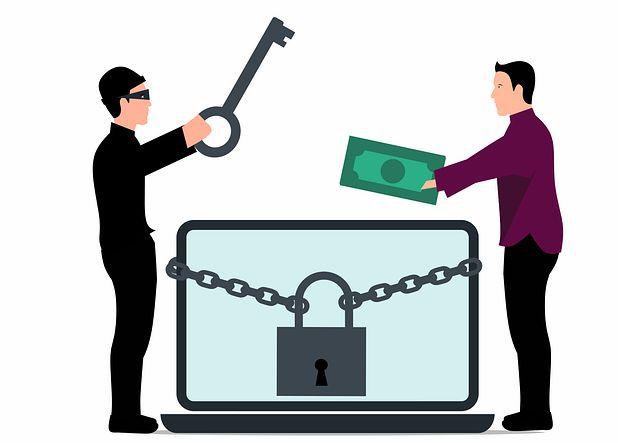Ransomware is a type of malicious software that encrypts a victim's files and demands a ransom payment in exchange for the decryption key. The threat of ransomware attacks has been on the rise in recent years, with more and more businesses and individuals falling victim to these attacks. In this report, we will provide an overview of the current state of ransomware attacks and discuss various strategies for defending against them. The thesis statement could be: "Ransomware attacks are a growing threat to businesses and individuals, and it is crucial to understand the tactics used by attackers and implement effective defense measures to protect against these attacks."
Understanding Ransomware
Ransomware works by encrypting a victim's files and demanding a ransom payment in exchange for the decryption key. The attackers often use strong encryption algorithms to ensure that the victim's files cannot be easily decrypted without the key.
There are several types of ransomware, each with its own unique characteristics. Some common types of ransomware include:
• Locker ransomware: This type of ransomware encrypts a victim's files and prevents them from accessing their computer or data.
• Cryptoware: This type of ransomware encrypts a victim's files and demands a ransom payment in the form of cryptocurrency.
• Scareware: This type of ransomware displays fake alerts or warnings on a victim's computer in an attempt to scare them into paying a ransom.
Common methods of delivery for Ransomware include:
• Phishing Emails: Attackers will send an email with a malicious link or attachment that, when clicked, will download and install the ransomware on the victim's computer.
• Exploit Kits: Attackers will exploit vulnerabilities in software to deliver and execute the ransomware on the victim's computer.
• Malvertising: Attackers will place malicious ads on legitimate websites that, when clicked, will download and install the ransomware on the victim's computer.
It's important to note that these are just examples and there could be other types and methods as well.
The Impact of Ransomware
Ransomware attacks can have significant financial costs for victims. In addition to paying the ransom, victims may also incur costs for forensic investigations, data recovery, and IT expenses to restore their systems and networks.
Ransomware attacks can also result in the loss of valuable data and business disruption. Encrypted files may be permanently lost if the victim is unable or unwilling to pay the ransom, and even if the files are recovered, there may be a significant amount of time and resources required to restore them.
Damage to reputation is another impact of Ransomware attacks. Businesses may suffer reputational damage if customers and clients become aware of the attack and lose trust in the company's ability to protect their data. Additionally, public disclosure of a ransomware attack may lead to negative press coverage and a loss of reputation among stakeholders.
In summary, Ransomware attacks can have serious financial, operational and reputational consequences for businesses and individuals. It's important to take proactive steps to protect against these attacks and minimize the impact if an attack occurs.
Prevention and Protection
There are several best practices for cybersecurity that can help prevent ransomware attacks. These include:
• Keeping software and operating systems up to date with the latest security patches
• Using a firewall to block unwanted incoming network traffic
• Regularly backing up important data to an offline location
• Using anti-virus and anti-malware software
• Restricting access to sensitive data and networks
In addition to these best practices, there are also software solutions available that can help protect against ransomware attacks. These include:
• Endpoint protection software: This type of software monitors a computer or network for suspicious activity and can block or remove malware before it can encrypt files.
• Backup and disaster recovery software: This type of software can create regular backups of important data and allow for quick recovery in the event of a ransomware attack.
• Cloud-based security solutions: This type of solution offers protection against ransomware by providing a secure backup and disaster recovery options, and also by identifying and blocking malicious files before they can reach your systems.
Employee education and training is also crucial in protecting against ransomware attacks. Employees should be trained on how to recognize and avoid phishing emails and other social engineering tactics used by attackers. They should also be educated on the importance of following best practices for cybersecurity and the potential consequences of a ransomware attack.
Implementing a combination of best practices, software solutions and employee education and training can help protect against ransomware attacks and minimize the impact if an attack occurs.
Responding to a Ransomware Attack
If a ransomware attack occurs, there are several steps that should be taken immediately:
• Isolate the affected systems: Disconnect the infected computer or device from the network to prevent the ransomware from spreading to other systems.
• Perform a forensic analysis: Identify the type of ransomware, the scope of the attack, and the extent of the damage.
• Restore from backups: If backups are available and have not been compromised, use them to restore the affected systems and data.
Once the immediate response steps have been taken, the decision of whether to pay the ransom must be made. Paying the ransom may be the only option for some victims, especially if the encrypted files are critical and there is no viable alternative for recovering them. However, it's important to note that there is no guarantee that the attackers will provide the decryption key or that the key will work. Additionally, paying the ransom may encourage the attackers to continue their criminal activities and put other victims at risk.
Working with law enforcement is also an important step in responding to a ransomware attack. Law enforcement agencies can provide valuable assistance in identifying the attackers, recovering stolen data and assets, and bringing the attackers to justice. This can be done by reporting the incident to the relevant authorities, and providing them with the necessary information to investigate the case.
Responding to a ransomware attack requires a combination of technical and strategic actions. It's important to immediately isolate and perform a forensic analysis of the affected systems, restore from backups if possible, make a decision whether to pay the ransom or not and work with law enforcement to investigate the case.
Conclusion
In summary, ransomware is a growing threat to businesses and individuals. It is a type of malicious software that encrypts a victim's files and demands a ransom payment in exchange for the decryption key. The threat of ransomware attacks has been on the rise in recent years, with more and more businesses and individuals falling victim to these attacks.
It is crucial to understand the tactics used by attackers and implement effective defense measures to protect against these attacks. Proactive measures such as implementing best practices for cybersecurity, using software solutions, and providing employee education and training can help prevent ransomware attacks. In the event of an attack, it is important to take immediate action to isolate and analyze the affected systems, make a decision on whether to pay the ransom, and work with law enforcement to investigate the case.
It's important to remember that Ransomware attacks can have serious financial, operational and reputational consequences, and it's crucial for businesses and individuals to take proactive steps to protect against these attacks and minimize the impact if an attack occurs. We encourage readers to implement defenses against ransomware, and to stay informed about the latest threats and best practices for protecting against them.



